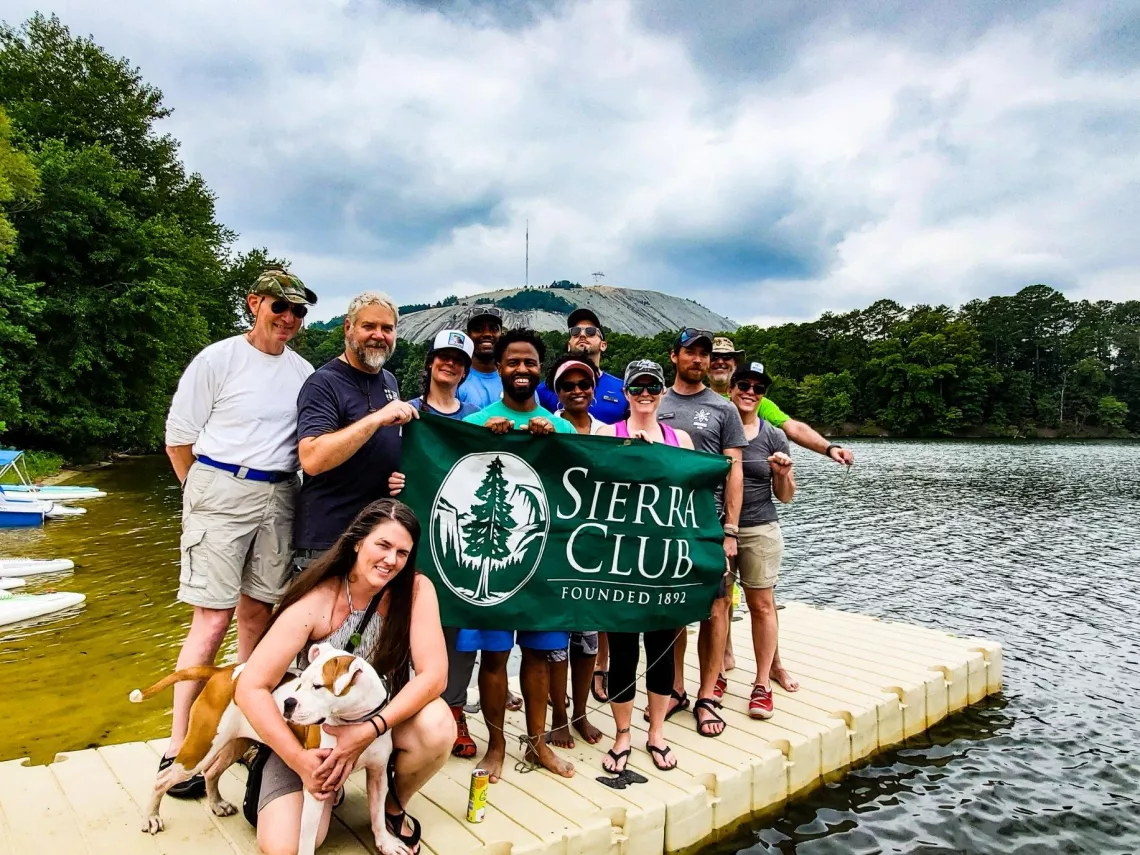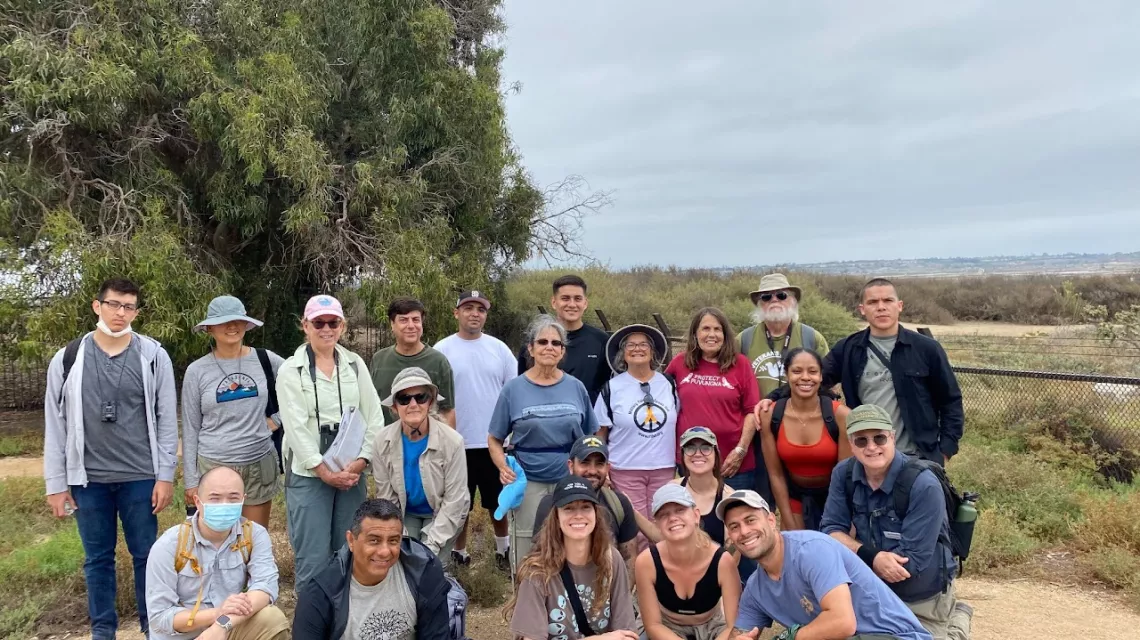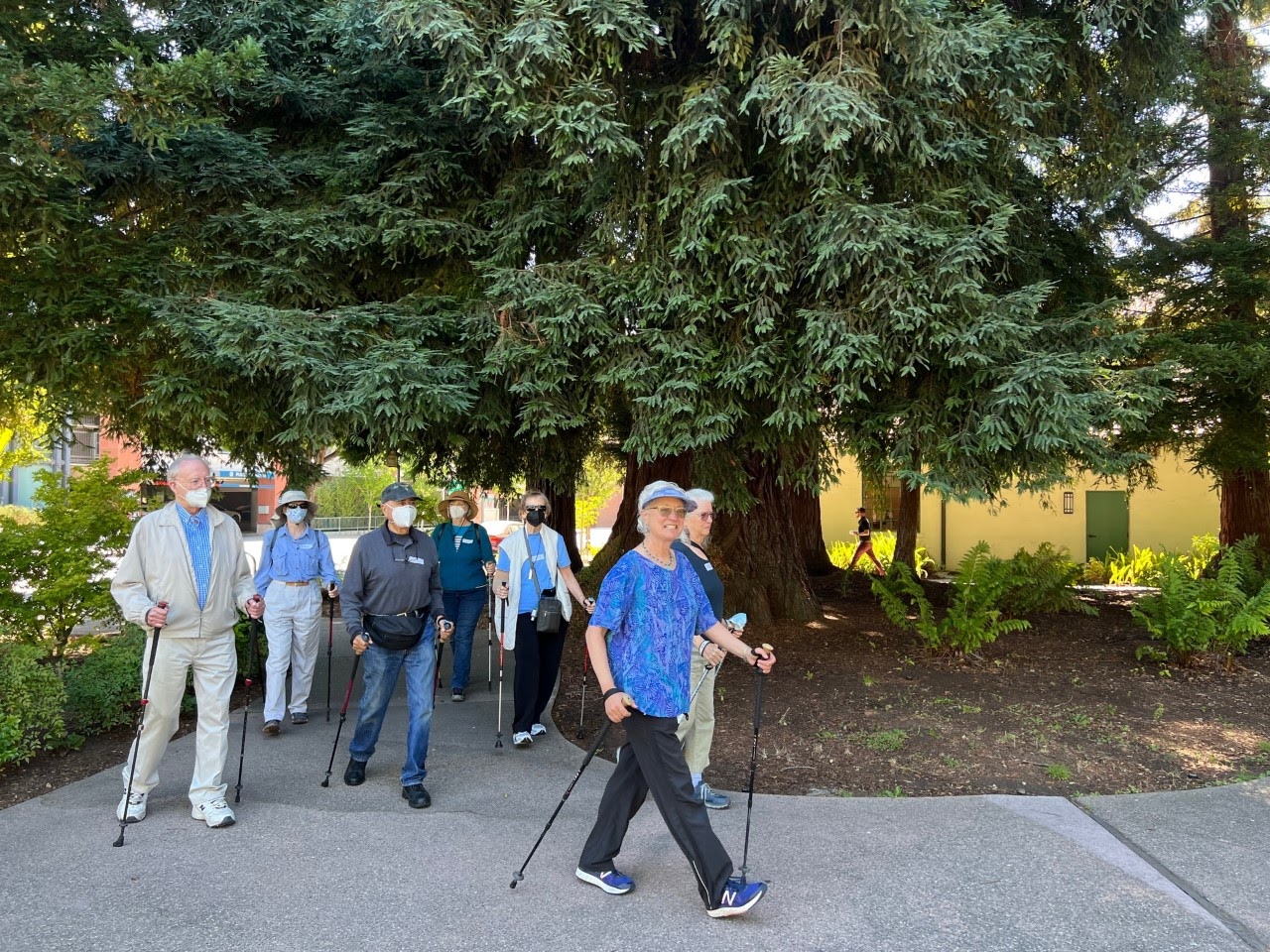The faces of several teens were beaming with accomplishment. The pride made sense. They had just hiked 10 miles up the side of a mountain.
This was in 2017 during the "Hike for Peace" at Stone Mountain Park in Stone Mountain, Georgia. Sierra Club Military Outdoors (SCMO) had partnered with the Georgia Chapter's Inspiring Connections Outdoors (ICO) program. Several SCMO outings leaders, myself included, and a couple of ICO leaders took 12 teenagers aged 13 through 17 up a mountain.
At first, I resisted leading a hike with a diverse group of teens at the infamous Stone Mountain Park. It’s a park that is a monument to the nation's racist and troubled history, with Confederate generals immortalized in Stone Mountain's rock face.
My co-leaders, Pete Johnson and Matt Nicholas, insisted we stay the course and host the Hike for Peace at Stone Mountain. Pete, an Army veteran, friend, Sierra Club Outings leader, and native Georgian, reminded me that we fought to defend this land and we needed to claim the space for all of us, especially with a diverse group of young people like the ones signed up for the hike who represent what our country truly can be.
Pete's words and the Georgia Chapter leaders standing firm moved me. They turned a place that could be hostile to many into a place where a group of young people got a sense of wonderment and accomplishment in the outdoors — a place countless other Georgians have already reclaimed for themselves.
That day taught me that Chapters and our local volunteers were the most important pillars of the Sierra Club. It also drove my passion for the mission of the Military Outdoors program. It’s been quite the journey since then to get Sierra Club Chapters to become a main partner in helping the Military Outdoors’ mission.
But let’s start at the beginning when I first came aboard at Sierra Club Military Outdoors.
From Rock Stars, to COVID-19
I started my Sierra Club journey in February 2016. The Sierra Club Military Outdoors (SCMO) program was a different beast when I came aboard as the Southeast Coordinator.
At that time, we wanted to create a space for veterans returning home from service to connect and be in communion with their fellow veterans. Many former service members like myself yearned for the camaraderie that came with being a member of the Armed Forces. We led epic outings that we called "Rock Star" trips where we had all sorts of unique experiences like floating the Green River, connecting with ancestors and each other in a sweat lodge guided by a Dine elder from the Navajo Nation in Arizona, participating in the Memorial Day River Run on the Chattooga River, canoeing the Arctic Wildlife Refuge, and ice climbing in Bozeman, Montana.
These adventures of a lifetime allowed us to connect with dozens of veterans, service members, and their families. Yet our impact was a drop in the ocean of the entire nationwide community of veterans.
We fought hard to grow our program and figure out new ways to connect veterans with nature and each other for the betterment of both. Our team was small but mighty. We’ve had some outstanding leadership in the past. I have former colleagues that I still consider good friends, and I keep in touch with them. Those Rock Star trips were life-changing for the veterans who attended them.
But we knew we wanted to make an even bigger impact. Even if SCMO hosted multiple local and national trips every month, we would only be able to reach a small percentage of the veteran population.
Something had to change, and thankfully it did. SCMO became part of a massive team. Under this new structure, we were further integrated into one of Sierra Club's biggest campaigns – Our Wild America. It allowed us to build more coalitions inside and outside the Sierra Club. We did all this while keeping our eyes on our original mission of helping veterans heal through nature.
The COVID-19 pandemic forced us to get creative. The coronavirus brought many things to a standstill, including our outings, so we started working behind the scenes. We were instrumental in getting the Accelerating Veterans Recovery Outdoors Act passed in a divided Congress and signed into law. SCMO is now positioned to influence lawmakers and the Department of Veterans Affairs, to help them see that nature can be the perfect assistant to traditional talk therapy and medicine for veterans dealing with issues like Post-Traumatic Stress Disorder, traumatic brain injury, combat injuries, and other issues impacting their quality of life. We also recognize not all veterans and service members face these challenges, but many may still feel disconnected from their families and communities.

Launching the Chapter Engagement Project
One huge step we needed to achieve was to bring our program to where the veterans and their families were. In 2022, we launched our chapter engagement project and offered 65 Sierra Club local chapters and more than 300 groups grant funding to kickstart local SCMO outings and programming.
Six chapters were selected for this first cohort: the Atlantic, Alaska, Connecticut, Loma Prieta, North Star, Angeles, and The North Florida Group. Each chapter and group came up with thrilling and exciting ways to bring veterans, service members, and military families into the larger Sierra Club family during that pilot year.
In the Bay Area, the Loma Prieta Chapter started courses in Nordic Walking – pole trekking for novices. These guided courses gave wounded warriors and veterans with mobility challenges the confidence and skills needed to get on the trail. Veterans of all ages and abilities have benefited from these courses. That includes the Marine Corps veteran with peripheral nephropathy due to Agent Orange and the Air Force vet with Parkinson's whose wife wheeled him into the class. No one had told him he could use his legs to propel himself. The entire class cheered him up and down the hallway as he made his way for the first time, with the trekking poles maintaining his balance. “We got him pole walking in 15-minute segments,” exclaimed our local leader in the Bay Area.
Our colleagues and volunteers in Florida shared a story challenge and how teamwork saved the day: “Our outings leader suddenly became very dizzy on a beach walk and had to lie down. Besides the high heat index, it turned out he was suffering from ’cat scratch fever,’ or Bartonella virus, caught from a baby kitten he rescued the week before on a hike. They were glad they were hiking with tons of veterans who all knew first aid.” They diagnosed the issue and came to that volunteer leader's aid on the trail. Even post-service veterans still act as a team, ensuring that everyone is accounted for and not one person is left behind.
The Alaska Chapter hopes to build partnerships with local nonprofit organizations in Anchorage and use SCMO to expand their growing outings program by bringing veterans to the vast and massive wilderness in the great state of Alaska.
In New York State, our Atlantic Chapter did an #OptOutside outing in late November, where 15 veterans from New York City Veterans Affairs Hospital spent four hours exploring New York’s Bear Mountain State Park. SCMO brought a videographer to this outing and produced a video highlighting the positive effects and the real-life challenges a marginalized veteran community has when trying to access, explore, and enjoy public lands.
The impact of our new outreach strategy also shows in our work establishing the New York Outdoor Rx Coalition in partnership with the New York State Division of Veterans’ Services. The Outdoor Rx Coalition is an alliance of NGOs and universities with the goal of increasing access to our public lands and lakes for all service members, veterans, and their families by removing the barriers that inhibit greater diversity, equity, and inclusion. The hope is to use this as a model in other states and nationally to remove the obstacles that prevent veterans from gaining access to the great outdoors.

Our Core Resource, The Chapters
These are just a few stories from our local Chapters. It shows how connecting veterans to nature and each other can help build community and confidence in individuals who might have isolated themselves from friends, family, and community. Over the last year, those Sierra Club Chapters and groups have partnered with local nonprofits, veteran service organizations, VA hospitals, and Vet Centers to bring Military Outdoors outings and programming right to people’s backyards.
We have not abandoned our extraordinary Rock Star trips, but we want to create amazing outdoor experiences for people right in their hometowns. We hope that all veterans, service members, and their families can experience the healing power of nature. We hope they can also take the next step to become advocates and activists in combating the climate crisis, breaking down barriers to accessing the outdoors for others, fighting for access to more green spaces in disadvantaged communities, and lobbying decision-makers to implement greener policies.
The Sierra Club Military Outdoors program has evolved over the last several years. We will continue to develop and grow with the military and veteran community in mind. We’ve seen amazing colleagues, volunteers, and leaders come and go throughout the years. But our mission has always stayed the same – helping veterans discover the healing power of nature.
And in this current stage of our audacious mission, we’re excited to have enlisted Sierra Club’s most incredible resource, our local Chapters.
